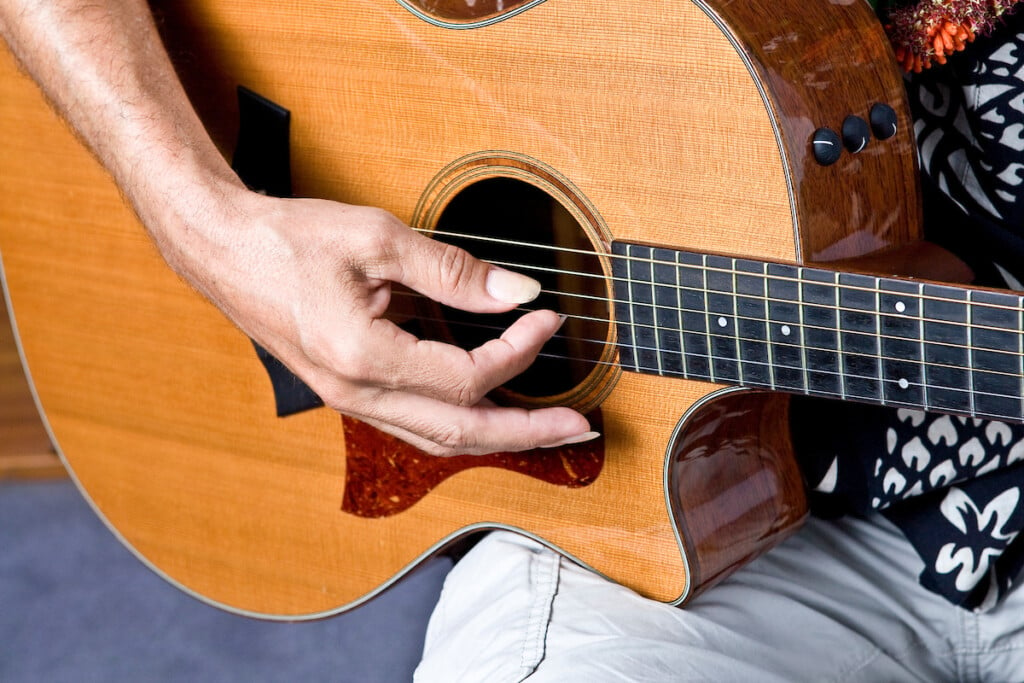How the Slack-Key Guitar Became the Musical Heartbeat of Hawaiʻi
Kī hōʻalu, or slack-key guitar, continues to capture the spirit of the Islands.

In Hawai‘i, from baby lū‘au to backyard potlucks, the sounds of Hawaiian slack-key guitar—or kī hō‘alu—fill the air.
These mele (songs) tell stories about life in the Islands, transporting listeners back in time and evoking a sweet sense of nostalgia. From joyful, energetic tunes about Waimea’s cowboy country to passionate odes to sweethearts in Waikīkī, Hawaiian slack-key is the instrument behind many of Hawai‘i’s most beautiful melodies.
The origins of this unique art form trace back to the days of paniolo (Hawaiian cowboys). In the early 1800s, to control the Islands’ cattle population, King Kamehameha III hired vaqueros (Spanish cowboys) to train local paniolo. In addition to herding techniques, the vaqueros brought their guitars. The paniolo experimented with different styles and ways of retuning the instrument to complement Hawaiian mele.
The style of playing they came up with is known as slack key because the strings are, in fact, slackened. This allows for interesting chord combinations and ethereal melodies. Many musicians develop their own unique tunings to suit their style. On a single acoustic guitar, one musician can create a song with complex patterns, rhythm, bass and melody and, to listeners, it can sound like there’s three guitars in one.
Although it existed for nearly a century, it wasn’t until the 1940s that kī hō‘alu made its way onto recordings. The first known recording is of “Hi‘ilawe,” as performed by slack-key legend Gabby Pahinui. Released in 1946, the song sparked a musical movement, inspiring more artists to play kī hō‘alu.
Today students learn from slack-key masters, who pass on closely guarded techniques, tunings and even meanings of songs. Together, these masters share the mission of preserving the Islands’ traditions, history and Hawaiian language through kī hō‘alu.
Throughout the Islands, exciting celebrations of kī hō‘alu bring together the best slack-key musicians. The Hawaiian Slack-Key Guitar Festival is an annual event hosted on O‘ahu, Maui, Kaua‘i and Hawai‘i Island, from June to November.
For more information about the Hawaiian Slack-Key Guitar Festival, visit facebook.com/slackkeyfestivals.
This story was originally published in our SPRING/SUMMER 2025 issue, which you can buy here. Better yet, subscribe and get HAWAIʻI Magazine delivered to right to your mailbox.
Grace Maeda is the editor of HAWAIʻI Magazine.

